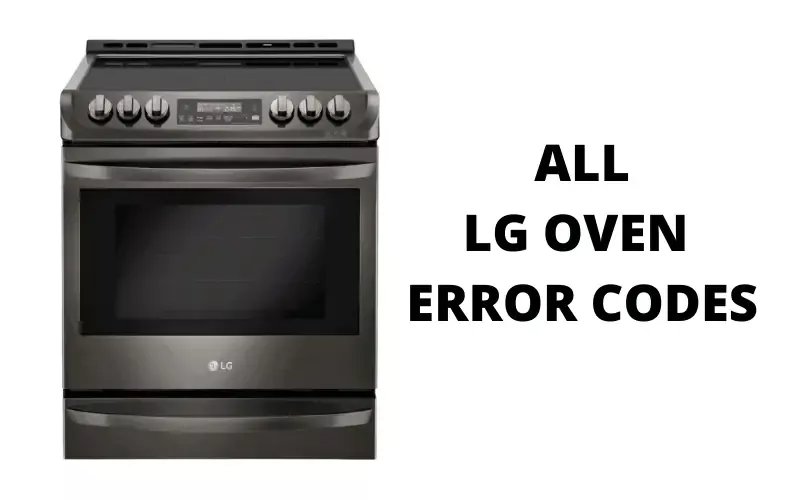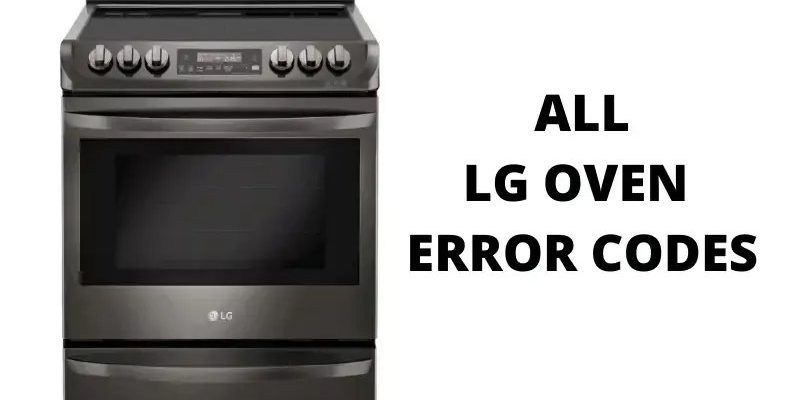
Error codes on appliances are like those mysterious hieroglyphs you might find in a puzzle game. They’re designed to pinpoint specific issues so you can figure out what’s going wrong without having to troubleshoot blindly. For LG ovens and ranges, the E1 error code specifically refers to a problem with the temperature sensor. This sensor is like the oven’s thermostat, keeping an eye on how hot things are getting inside. When it’s not working correctly, your oven or range might not heat properly, or worse, overheat.
So the big question is, “Can you still use your oven or range if it shows this error?” The short answer is: maybe, but it comes with a few caveats. Think of it like driving a car with the check engine light on—it’s possible, but not advised unless you’re aware of the risks and have a plan to fix it. Let’s take a closer look at what you should consider when your trusty kitchen companion throws an E1 code.
Understanding the E1 Error Code
The E1 error code on LG ovens and ranges is usually an alert for a malfunctioning temperature sensor or an issue with the sensor circuit. Imagine you’re baking cookies; your oven’s sensor should be like a diligent babysitter, making sure everything is just right. When the sensor’s not doing its job, the oven can’t maintain the correct temperature.
So why does this sensor act up? Over time, regular wear and tear or electrical faults can lead to sensor issues. Alternatively, accidental physical damage during cleaning or maintenance could be the culprit. It’s like when your phone screen cracks after a fall—things just don’t work as smoothly afterward.
Now, you might be wondering how this affects your cooking. Well, the E1 error can prevent your oven from heating up to the desired temperature or cause it to heat erratically. This means uneven cooking or even potentially dangerous overheating. In short, if you’re seeing the E1 code, it’s a sign that something isn’t quite right under the hood.
Here’s the deal: unless you’re a seasoned repair expert, it’s often best to reach out to a professional to get a clear diagnosis and fix the problem. Trying to fix things yourself without proper knowledge might lead to more harm than good. While waiting for a technician, use the oven with caution and check the food frequently to avoid any mishaps.
Safety Considerations and Precautions
Before you continue using your LG oven with the E1 error, consider some safety precautions. Think of your oven as a close but needy friend—it needs attention and care to function well. Ignoring its calls for help might lead to more severe issues or even damage.
First, if you choose to use the oven while it’s showing the E1 code, keep an eye on it at all times. Just like you wouldn’t leave a child unattended in a playground, don’t leave the kitchen while your oven is on. Set timers and temperature alerts to prevent any accidents.
Secondly, consider avoiding recipes that require precise temperatures or long cooking times. Baking a cake or roasting a large piece of meat might not be the best idea. Stick to simpler dishes until you can address the error. It’s like wearing flip-flops in the snow—not quite the best fit for the conditions.
Lastly, if you notice any strange smells, sounds, or if the oven heats up more than usual, turn it off immediately and unplug it if possible. Safety should always be a priority, and it’s better to stop using the appliance than risk a fire or damage.
Troubleshooting and Solutions
So, what can you do about that pesky E1 error code? First off, try a simple reset. Much like restarting a frozen computer, turning the oven off and then back on can sometimes resolve minor glitches. Unplug the oven for a few minutes, then reconnect it and check if the error persists.
If that doesn’t work, the next step is to inspect the temperature sensor and its connections. The sensor is usually located at the back of the oven, and it looks like a thin metal rod. Make sure it’s securely connected and hasn’t loosened due to vibrations or movement. Be cautious, though, as fiddling without proper tools or know-how can lead to more issues.
For many, the best course of action is calling in a professional repair service. They have the right tools and expertise to diagnose and fix the problem efficiently. It’s sometimes better to invest in a professional fix to extend the life of your appliance than attempt a DIY job that might not hold up.
Finally, if you’re not already regularly maintaining your oven, now’s a good time to start. Regular cleaning and inspections can prevent many common problems and keep your appliance running smoothly. Think of it as giving your oven a spa day—keeping it clean and well-maintained ensures it stays in top shape for all your culinary adventures.
Prevention Tips for Future Issues
Preventing error codes like E1 from popping up again is all about regular care and attention. Consider it as if you’re tending to a garden; a little maintenance goes a long way in ensuring everything blossoms beautifully.
Start by routinely cleaning your oven and range. Remove any food debris, spills, and grease build-up that could lead to sensor issues. Use gentle, non-abrasive cleaners and follow the manufacturer’s guidelines for the best results. Keeping your oven clean not only prevents errors but also ensures your meals are tastier and healthier.
In addition to cleaning, inspect the temperature sensor and other components every few months. Look for any loose connections or signs of wear, just like you’d check the oil and tyre pressure before a long road trip. This proactive approach can spare you from unexpected error codes.
Lastly, show some love to your appliance by not overloading it or using it beyond its intended functions. Each appliance is designed with specific capabilities and pushing these limits can cause unnecessary strain. Use your oven as intended, and it will likely serve you well for years to come.
In conclusion, while you might be able to use your LG oven or range with an E1 error code, it’s important to proceed with caution and seek a resolution sooner rather than later. With the right approach, you can enjoy your culinary creations without unwelcome interruptions.
